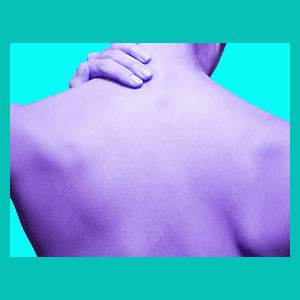
Herniated disc muscle pain is one of the many possible symptomatic expressions of certain disc prolapse conditions. Muscle pain is the most common type of dorsopathy experienced and the symptoms range from minor aches to gut wrenching spasms. Since the muscles throughout the body are innervated by nerve energy from the spinal cord, there is always a chance that a herniated disc can affect the muscular anatomy through the processes of spinal stenosis or foraminal stenosis. Just remember that there are also many more logical reasons for muscular pain to exist and some disc pathologies may be misdiagnosed as the actual causation of pain.
This narrative explains how muscular pain and intervertebral bulges might be related in some patients.
What is Herniated Disc Muscle Pain?
Muscle pain is a general term for symptoms which are exhibited in the muscles, ligaments, tendons and other soft tissues of the anatomy. It differs from mechanical pain which most commonly exists in the joints of the spine or neurological pain which is due to nerve interactions. Muscular pain can result from injury to the muscle itself or can exist due to some nerve abnormality which serves the muscle in question.
In the case of a herniated disc, the pain is virtually always thought to be occurring due to spinal stenosis affecting the actual functionality of the entire spinal cord or cauda equina, or more commonly, foraminal stenosis, in which a spinal nerve root has been compressed by the bulging disc. This latter diagnosis is commonly referred to as a pinched nerve.
Muscle Pain from Herniated Discs
In the case of severe spinal stenosis, symptoms can occur virtually anywhere in the body. This is a fact, but is not common knowledge. Many cervical stenosis sufferers endure symptoms in their lower bodies which are usually either not found to correspond to any structural lumbar issue or are mistakenly blamed on coincidental and innocent lumbar structural irregularities. However, it should be noted that muscle pain is not always a typical symptom of spinal stenosis. Far more prevalent are the complaints of weakness, tingling and numbness, since the nerve fibers are simply not able to function properly.
When a pinched nerve is diagnosed due to a herniated disc, there is always a great chance that the diagnostic conclusion is incorrect. Nerve roots have definite and specific symptomatic patterns associated with them and in my experience, the symptoms reported are usually far too wide ranging to be explained from the diagnostic theory. This is why I always recommend that patients get involved and learn all they can about what their expected symptomatic pattern should be and then compare it to what they are actually feeling.
Additionally, correlation with an objective neurologist often proves helpful.
Herniated Disc Muscle Pain Relief
Typical back pain consists of large areas of soreness and smaller areas of acute pain. The symptoms may be linked to particular or general activity or may simply exist all the time. Just remember the most important keys to understanding the relationship between muscular pain and herniated discs:
Most disc issues which do indeed create symptoms typically do not enact chronic pain. The symptom generating ability of a true pinched nerve is usually limited to objective numbness and weakness far more than pain. This is not always a 100% rule, but it is a good guideline.
In spinal stenosis patients, virtually anything is possible, but widespread muscular pain is not inherent. If you have not found relief despite active attempts at treatment, I urge you to learn more about one of the most logical explanations for treatment-resistant back muscle pain. That condition is surely regional ischemia.
Herniated Disc > Herniated Disc Pain > Herniated Disc Muscle Pain




